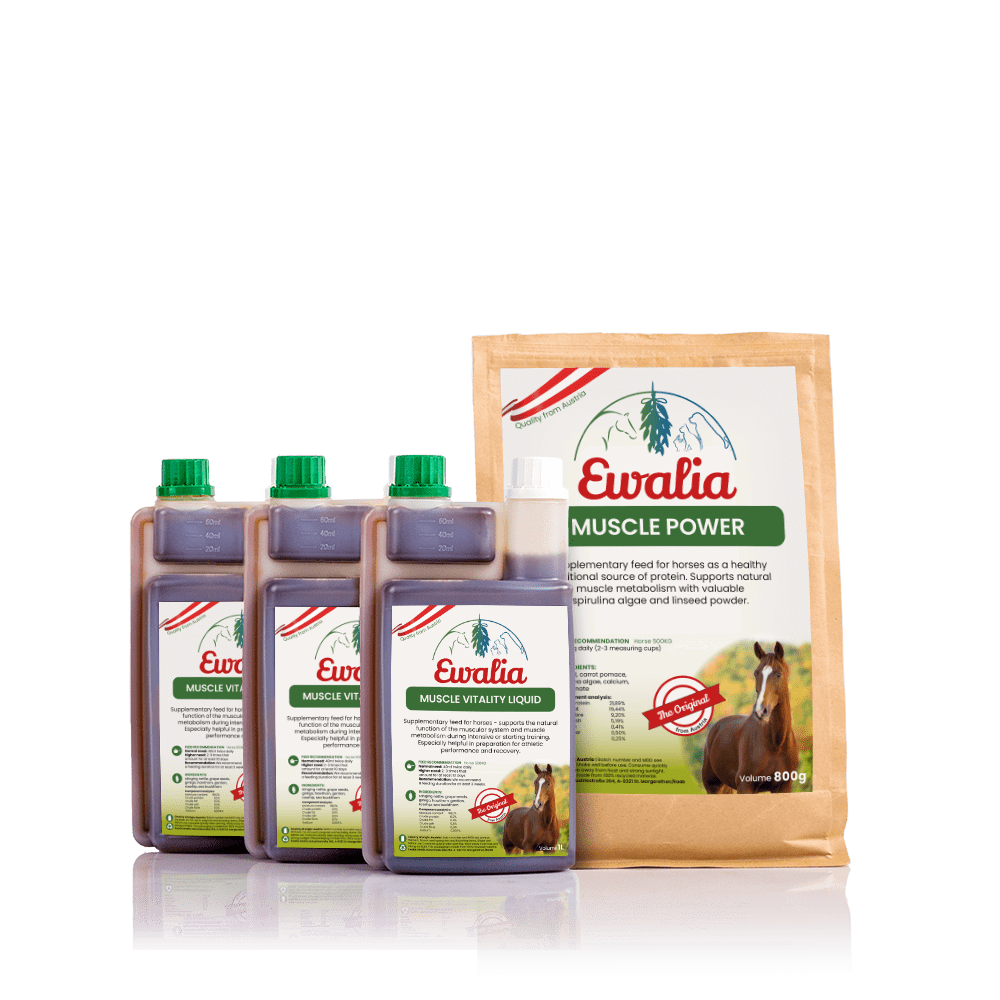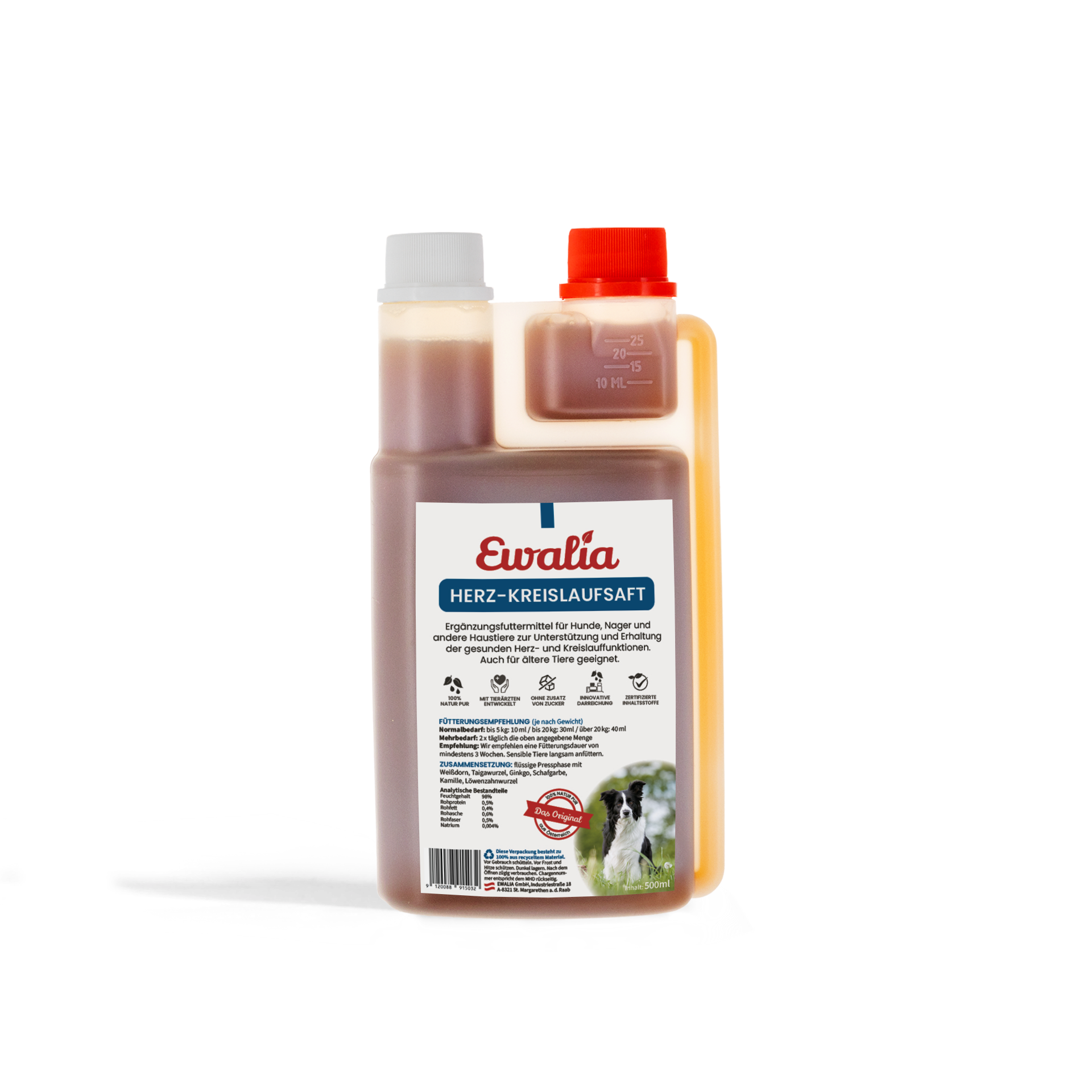Ginkgo

Ginkgo products/uses are among the best-known herbal remedies for chronic age-related ailments. The ginkgo tree's fan-shaped leaves contain active ingredients that can promote blood circulation, protect the nerve cells, and alleviate signs of ageing in horses and dogs.
Where do ginkgos come from, and what do they look like?
Charles Darwin rightly called the ginkgo tree a "living fossil": prehistoric ginkgo plants existed as early as 250 million years ago. The only surviving species today is Ginkgo biloba, native to the mountain forests of South-East Asia. Neither broad-leaved nor coniferous, this 30–40 m tree is the last living member of the class Ginkgoatae. This deciduous tree can grow to be 1,000 years old with a diameter of four metres. Older trees create a spreading canopy. The bark is rough and dark grey with deep grooves.
The unusual shape of its leaves, giving the tree its old Chinese name
ya chio, or "duck foot", is also quite unique. The valuable active ingredients of the ginkgo are contained in these fan-shaped, twin-lobed leaves.
Another distinctive feature of the ginkgo tree is its ability to form aboveground and underground secondary stems in poor environmental conditions, growing like stalactites from the trunk or branches. These woody growths put forth new shoots.
Ginkgos are dioecious, meaning that there are male trees and female trees. They wait 20 to 30 years to flower. The male trees produce catkins, the pollen from which is carried with the wind, but the motile sperm reach the female flowers by swimming through droplets of fluid. The female flowers develop silvery, mirabelle-like seeds that have an unpleasant, rancid smell due to their butyric acid content. The pulp encasing the "nut" has a sharp, raspy taste and leaves a "furry" feeling in the mouth.
Although ginkgo trees have not been here in Europe for all that long, they are nevertheless quite well-known. They are often planted along streets or in parks, as they withstand extreme temperatures, air pollution, insect damage, fungi, bacteria and viruses.
In Asia, the ginkgo was first cultivated in the 11th century; its medicinal properties were known well before that. The tree was first introduced to Europe in the first half of the 18th century. Today the trees are grown on plantations in Japan, South Korea, South Carolina, and France for their green ginkgo leaves. The leaves must be dried within 12 hours of harvest so that they do not wilt. They are then finely ground for extraction.
A versatile, highly symbolic tree
In Asia, the ginkgo is considered a holy tree and is often found near temples and other places of worship. In Buddhism, Taoism and in the teachings of Confucius, the tree has acquired great symbolic significance, representing long life, vitality, and hope. In China, the ginkgo tree is also called "Buddha's fingernail". Its unique, twin-lobed leaves are associated with the concept of yin and yang. The Chinese had such high regard for the ginkgo that the leaves were even used as currency.
The soft, pale wood is extremely resilient and durable. In Asia it is used to panel houses and to make board games and chopping boards. It is also well suited for wood carving and, due its smooth surface,for making Japanese tissue paper.
In Japan and in other Asian countries, the seeds are peeled, cooked and roasted in small quantities to be eaten as a snack or used as a piquant ingredient in cooking. However, consumption of large quantities can be toxic.
In Europe, the ginkgo's triumphal march was launched by a poem by Johann Wolfgang von Goethe, who popularised the ginkgo leaf as a symbol of friendship. The characteristic leaf shape later found its way into Art Nouveau designs and is still a popular design motif today.
Ginkgo trees continue to exert a great fascination and are planted in many cities as symbols of peace, friendship and hope.
Today, it is used in the manufacture of many cosmetics and wellness products. Its active substances are said to have regenerating effects on the skin and keep it supple. Ginkgo can also be found in stimulating energy drinks – although caution is advised, as there could be side effects!
How is ginkgo used as a healing plant?
Traditional Chinese medicine makes use of the leaves, seeds, and roots of the ginkgo tree. The leaf is applied externally to heal wounds, and taken internally to treat blood circulation ailments, asthma, and angina pectoris. The seeds are decocted for extracts to restore physical and mental performance, whilst the roots are said to have stimulating and astringent effects.
Ginkgo's medicinal properties were first introduced to the West in the 1960s. In 1965 a company in Karlsruhe, Germany, Dr. Willmar Schwabe GmbH & Co. KG, developed the first "ginkgo special extract" based on a dry leaf extract obtained with the help of an acetone-water mixture. Ginkgo biloba's effectiveness was subsequently researched in numerous scientific studies.
The active substances in ginkgo are proven to increase the fluidity of the blood and have vasodilatory effects, improving blood flow in the arteries, veins, and capillaries. Ginkgo also improves the supply of oxygen and nutrients to the organism, thus helping brain metabolism.
It can also influence what is known as the platelet activating factor (PAF), which promotes blood coagulation and thus reducing the risk of blot clots.
The antioxidant properties of ginkgo serve as free radical scavengers and compensate for the lack of energy in nerve cells caused by cell ageing. Ginkgo is considered a medicinal plant for age-related ailments and associated cognitive decline.
In phytotherapy, only concentrated extracts from the leaves are used – the active substances are insufficiently released in, say, tea preparations. In addition, teas made from ginkgo may contain ginkgolic acid, which causes allergic reactions and stomach complaints.
Which substances account for ginkgo's effects?
Ginkgo leaves contain a significant quantity of flavonoids (secondary plant substances), including quercetin and kaempferol. Quercetin, which is also present in sea-buckthorn, works as a radical scavenger, similar to vitamins A and E. Kaempferol is said to have antimicrobial, anti-inflammatory and neuroprotective properties.
Ginkgolides are found only in ginkgos. These substances improve blood circulation and have antioxidant effects.
Bilobalide is chemically related to ginkgolides. This substance, also found only in ginkgos, has protective effects on nerve cells and promotes blood flow to the brain.
Together, these substances counteract degenerative processes in the nerve cells caused by free radicals. The antioxidant effects of ginkgo extracts also include the activation of enzymes that accelerate the breakdown of free radicals.
What can ginkgo be used to treat in horses and dogs?
Old age can cause horses and dogs to suffer from cognitive impairment or senile dementia, causing affected animals to experience disorientation and confusion. Horses become inattentive, no longer recognise their humans, or can no longer navigate through their environment.
Dogs suffering from dementia often forget their house training, and no longer communicate when they must "go". They can no longer distinguish humans from one another, and their sleep-wake rhythm is disrupted so that they may sleep through the day and be awake through the night. Afflicted animals often stare into space, wander aimlessly, or get lost between the furniture.
These behavioural changes are caused by degradation processes and deposits in the brain. The disease impairs their quality of life and can also be stressful for their humans!
A scientific study found that Ginkgo biloba extracts improved symptoms significantly after four weeks. Both older and younger animals showed significant improvement in memory and learning ability. This effect can be reinforced through long-term treatment.
Ginkgo also improves blood circulation to the limbs. It can alleviate insensitivity in the paws, which the ageing dog may display by licking them incessantly.
Adverse effects
Horses and dogs tolerate ginkgo quite well. Ready-made ginkgo products will be almost completely free of ginkgolic acids, which irritate the stomach and may have allergenic effects.
In very rare cases, sensitive animals may experience mild skin reactions that subside without treatment.
Quellen
- Cäcilia Brendieck-Worm, Matthias F. Melzig: Phytotherapie in der Tiermedizin, Thieme 2018
- J. Reichling, R. Gachnian-Mirtscheva, M. Frater-Schröder, R. Saller, M. I. Rabinovich, W. Widmaier: Heilpflanzenkunde für die Veterinärpraxis, Springer 2008
- https://www.pharmazeutische-zeitung.de/ausgabe-082011/ginkgo-schuetzt-nervenzellen/
- https://kfn-ev.de/wissenschaft/bibliographie/pharmakologische-wirkungen-von-ginkgo-biloba#



















